Reconstruction 9.2 (2009)
Return to Contents>>
Notes on Architecture/ Maroš Krivý
Keywords:place & space, urban studies, visual culture
Today, the crucial issue in our urban life is the growing gap between those who build, interpret and explain and those who only listen, live and experience what is given to them. This gap is sustained and fueled by discourse, which reduces the question of spatial organization to its particular, and therefore abstract, aspects.
The aesthetic division of things and practices is conceptualized by Jacques Rancière as distribution of sensible. It is a subdivision of the whole into parts, where each part is assigned a particular place with particular function (professionals giving advices, housewives happily accepting advices, wierdos drinking alcohol and making fire in old buildings, etc.). Politics, or redistribution of sensible, is then the moment of intervention into this system. What form does this intervention assumes?
First, politics is not an oscillation of individual elements within the multiplicity of particular positions (an attempt to make heard one's particular interests without any questioning of the organization of individual interests as a whole - transgressive activities of professionals fascinated by abandoned buildings, weirdos responsibly accepting advices, etc.) In this case, the overall configuration of whole and its parts would remain undisturbed. The moment of redistribution takes place by a refusal of a part to be identified with its particular position within the whole, yet without immediately assuming another particular position. The only position this part assumes is that it belongs to the whole, without any further specification.
In the presented series I juxtapose variety of ideological discourses on architecture with images that develop, contrast, expose or oppose them. The journalistic language where everything and everyone should be in the proper place and professionals rule and give advices is sought out in the sphere of architecture and combined with scenes where architecture is 'out of joint'. Ridicoulously philosophical, desperately advertising or naively aggresive, these newspaper cut-outs try to find their other side in presented photographs.
Formally, I have been interested in exploring the interaction between the image and text, where neither text is reduced to the caption of image, nor image is reduced to illustration of a text. The message emerges here only from between the image and text, from their contradictory communication („Le texte ne 'commente' pas les images. Les images 'n'illustrent' pas le texte... [T]exte et images, dans leur entrelacs, veulent assurer la circulation, l'échange de ces signifiants...“)[1].
The presented photographs try to find such architectural and urbanistic part which has no part, implicitly excluded within the journalistic discourse. While not everyone is supposed to know what architecture is, it is somehow assumed that everyone knows what it is not. The seriousness of certain spatial forms and practices is made secure by defining the rest as a mere play. I want to understand this play seriously and at the same time play with the seriousness of declarations in the newspaper cut-outs.
By focusing on the obsolete side of space and architecture, I do not merely attempt to oppose architecture by 'what it is not' and to contrast monumental by what does it exclude as ordinary, but this opposition is staged in order to change the very meaning of what architecture and monumentality could mean.
The logic of distribution of architectural objects and practices into monumental and ordinary, functional and obsolete, important and unimportant is interrupted by that which has no part in the dominant representation of architecture (the before and after of architectural object, the insignificant points in space). Through this act, the off-screen space (the 'off-page space') of architecture claims its belonging to the whole of the architectural practice. It is this new monumentality of 'any-place' that resist the closure of architectural practice and that makes architectural objects non-identical with themselves.
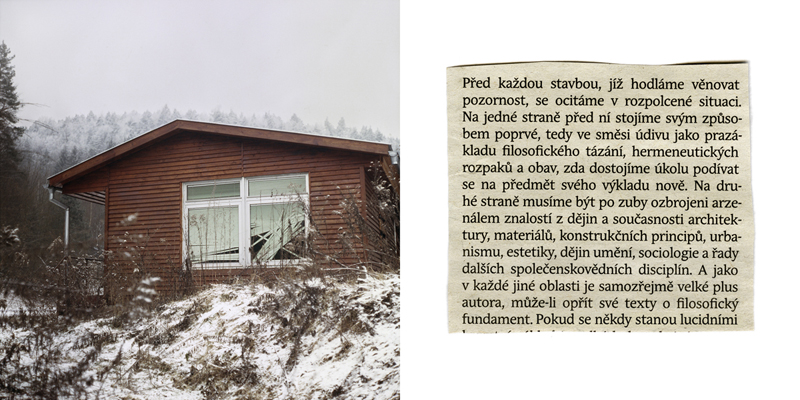
We find ourselves in a contradictory situation in front of every construction which we want to study. On one side we stand there as if for the first time, in a mixture of astonishment as an essence of philosophical inquiry, hermeneutic uneasiness and anxiety, whether we would be up to the task of looking at the object in a new way. On the other side we have to be armed to the teeth with the arsenal of knowledge of history and presence of architecture, materials, construction principles, urbanism, aesthetics, history of art, sociology and a host of other human sciences. And as in any other field it is obviously author's advantage if he can ground the texts in a philosophical fundament. If they ever become lucid.
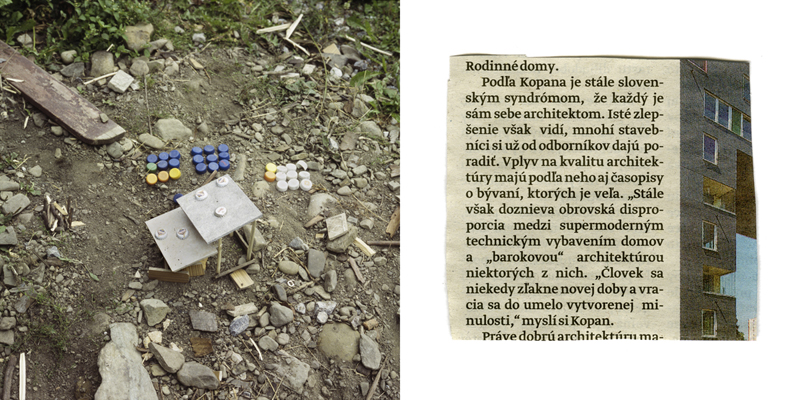
Family houses.
According to Kopan it is still a Slovak syndrome that everyone wants to be the architect for oneself. Nonetheless, he sees some improvement in the fact that many builders already accept advice from professionals. The quality of architecture is further influenced by numerous magazines about housing. „But there is still an echo of the disproportion between supermodern technologic equipment of houses and 'Baroque' architecture of some of them. „Man is often afraid of modern times and he returns to artificially created past.“ Good architecture in particular...
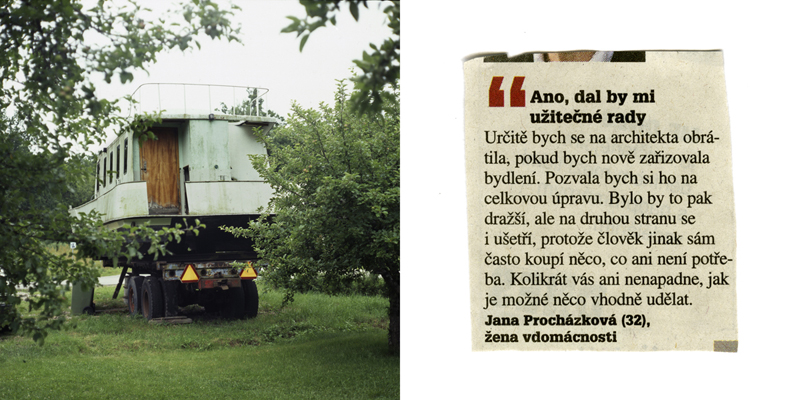
“Yes, he would give me useful tips
If I arranged house anew I would certainly turn upon an architect. I would invite him to do a general design. It would be then more expensive but on the other side, this also saves money because people often buy unnecessary things. Many times you have no idea how fittingly some things can be done.
Jana Procházková (32),
housewife
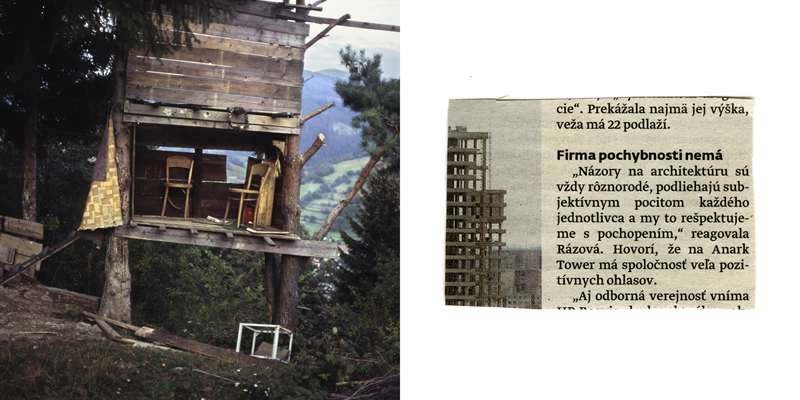
...The main objection was its height, the tower has 22 floors.
The corporation has no doubts
„Opinions on architecture are always diversified, governed by subjective feelings of each individual person and we respect this sympathetically,“
„Also the professional community perceives
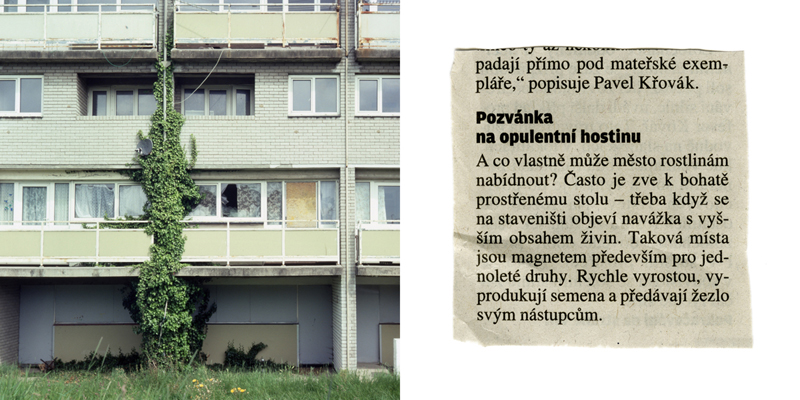
fall right under the maternal specimens,“ describes Pavel Křovák.
Invitation
to a lush feast
And what could a city in fact offer to plants? Often, it invites them to a richly laid table - for example, when a construction site is invaded by plants with a larger amount of nutrients. Such places act as magnets mostly for yearling species. They grow fast, produce seeds and pass the sceptre onto successors.
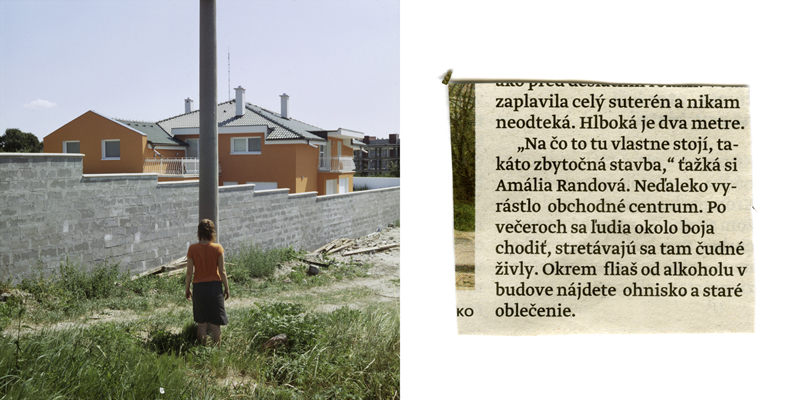
flooded the entire basement and does not flow out. It is two metres deep.
„What for does it in fact stand here, such an useless building?,“ complains Amália Randová. A shopping centre was constructed nearby. In the evenings people are afraid to walk here, it is the meeting place of weirdos. Apart from alcohol bottles one can find a fire place and old clothes in the building.
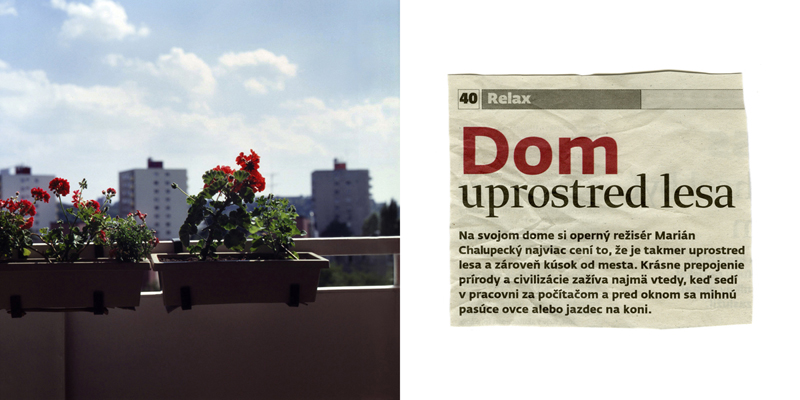
Relax
House in the middle of a forest
For the opera director Marián Chalupecký the most valuable thing about his house is the fact that it is located almost in the middle of a forest but at the same time only few steps from a city. Notably, he experiences the splendid combination of nature and civilization when sitting in the working room in front of a computer and grazing sheep or horse rider pass behind the window.
Notes
[1] Roland Barthes, L'Empire des Signes (Paris: Flammarion, 1970), p. 5 [^]
Return to Top»
